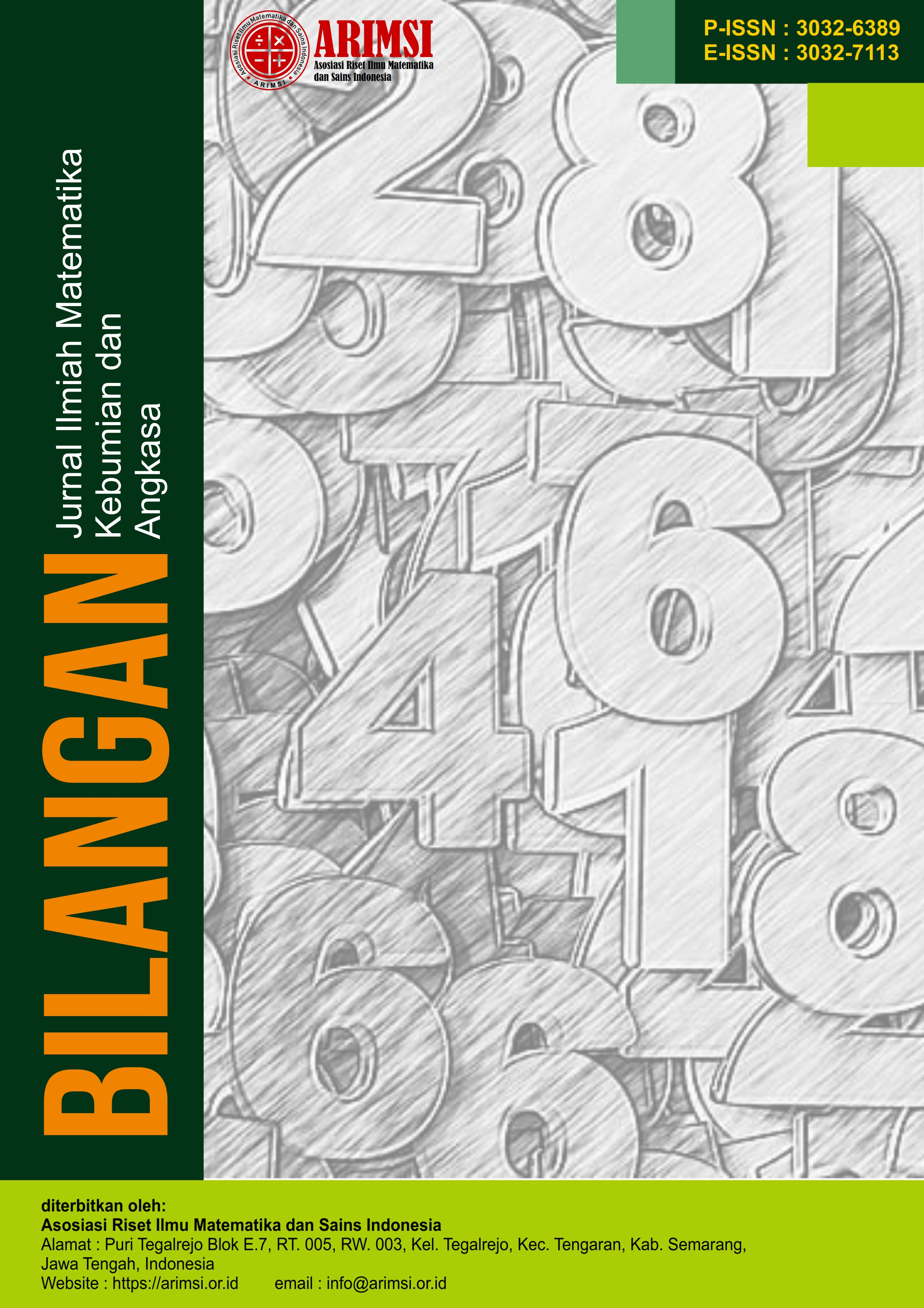Binomial Distribution As a Measurement of The Success and Failure FMIPA Untrib Students in The 2018-2023 Academic Year
DOI:
https://doi.org/10.62383/bilangan.v3i3.561Keywords:
Binomial Distribution, Number of Graduates, ProbabilityAbstract
This research aims to determine the estimated probability of failure for the number of FMIPA Untrib Kalabahi student graduates from 2018 to 2023 for each study program. This research uses secondary data obtained directly from the Untrib Student Affairs Academic Administration Bureau for the last six years from 2018 to 2023. The Binomial Distribution is a distribution of discrete random variables with two possibilities, namely success and failure. This research shows that the three study programs at FMIPA Untrib Kalabahi have different opportunity or probability values. For the mathematics study program, it can be seen that the largest predicted failure will be in 2022, namely 0.225585937500 and the smallest predicted failure will be in 2019, namely 0.000000000015. For the chemistry study program, the biggest failure estimate is in 2023, namely 0.37500 and the largest failure estimate is in 2021, namely 0.00006. For the informatics engineering study program, the largest failure estimate is in 2018, namely 0.0000000298023223876953 and the smallest failure estimate is in 2023, namely 0.000000000000000087.
Downloads
References
Adrianingsih, N. Y., dkk. (2024). Berangkat dari teori menuju praktik: Beberapa uji statistika nonparametrik dengan software SPSS. Minhaj Pustaka.
Andriani, D. P. (2019). Discrete probability distributions: Binomial, multinomial, & negative binomial, 6, 28.
Bagui, S. C., & Mehra, K. L. (2016). Convergences of binomial, Poisson, negative-binomial, and gamma to normal distribution: Moment generating functions technique. American Journal of Mathematics and Statistics, 6(3), 117–118. https://doi.org/10.5923/j.ajms.20160603.05
Bagui, S., & Mehra, K. L. (2017). Convergence of binomial to normal: Multiple proofs. International Mathematical Forum, 12, 402. https://doi.org/10.12988/imf.2017.7118
Cookson, M. D., & Stirk, P. M. R. (2019). Theoretical basis, theory of economic conditions (pp. 45–80).
Desthihan, P. R. (2023). Teori probability and formulas, how to calculate, definitions, and example questions. Bulletin of Applied Industrial Engineering Theory. https://www.detik.com/bali/berita/d-6611489/teori-probabilitas-serta-rumus
Ena, M. (2023). Comparison of artificial neural network backpropagation and GARCH methods in predicting stock price (Case study: Indosat shares 2012–2022). EKSAKTA: Journal of Sciences and Data Analysis, 15–29.
Ena, M., & Maro, L. (2024). Penerapan metode pemulusan eksponensial ganda dari Brown dalam memprediksi indeks harga konsumen Provinsi NTT. Statistika, 24(2), 135–142.
Jhw, P. K. (2022). Basic probability (October), 1–5. Universitas Nusa Putra.
Loban, J. M., dkk. (2023). Binomial distribution test on student study period data. SEPREN: Journal of Mathematics Education and Applied, 4(2), 140–146. https://doi.org/10.36655/sepren.v4i1
Maulana, D. A., dkk. (2021). Penerapan distribusi binomial pada keberhasilan dan kegagalan dalam pembuatan layang-layang. Bulletin of Applied Industrial Engineering Theory, 2(1), 24–26.
Maulana, D. A., Jayadi, H., & Gunawan, I. (2021). Application of binomial distribution to success and failure in kite making. Bulletin of Applied Industrial Engineering Theory, 2(1), 24–26.
Pratiwi, S. S. (2017). The influence of student activeness in organizations and learning motivation on student learning achievement of the Faculty of Economics, Yogyakarta State University. Jurnal Pendidikan dan Ekonomi, 6(1), 54–64. http://journal.student.uny.ac.id/ojs/index.php/ekonomi/article/view/6074
Rahman, A., dkk. (2022). Definition of education, educational science and elements of education. Al Urwatul Wutsqa: Kajian Pendidikan Islam, 2(1), 1–8.
Setyaningsih, A., Gunawan, M. I., Fauzi, L., & Taher, R. A. A. M. (2021). Binomial method regarding government success in overcoming congestion in the capital city of Jakarta. Bulletin of Applied Industrial Engineering Theory, 2(1), 21–23.
Suryosubroto, B. (2002). The influence of student activeness in organizations on the learning achievement of students in the Department of Economics Education, Faculty of Economics, Unesa. Jupe, 6(2), 76–80.
Yanti, T. D. (2016). Binomial distribution. Jurnal Infra, 4(2), 193–199.
Downloads
Published
How to Cite
Issue
Section
License
Copyright (c) 2025 Bilangan : Jurnal Ilmiah Matematika, Kebumian dan Angkasa

This work is licensed under a Creative Commons Attribution-ShareAlike 4.0 International License.





